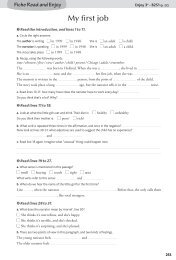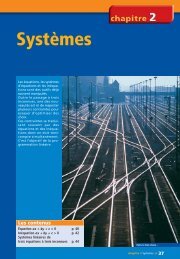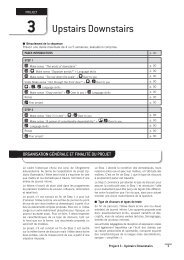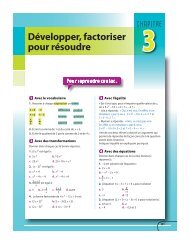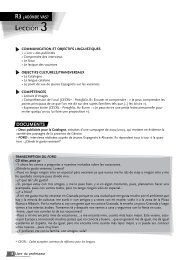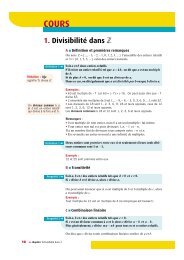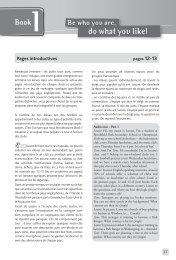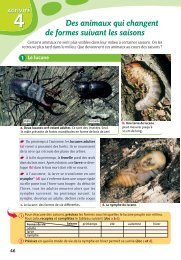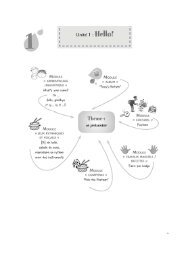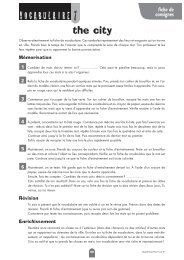Children at work - Didier
Children at work - Didier
Children at work - Didier
Create successful ePaper yourself
Turn your PDF publications into a flip-book with our unique Google optimized e-Paper software.
Wh<strong>at</strong> time did you get them up in the morning?<br />
In general me or my mistress [wife] got up <strong>at</strong><br />
2 o’clock to dress them.<br />
So th<strong>at</strong> they had not above 4 hours sleep<br />
<strong>at</strong> this time?<br />
No, they had not. […].<br />
Were the children excessively f<strong>at</strong>igued by<br />
this labour?<br />
Many times; we have cried often when we have<br />
given them the little victualling we had to give them;<br />
we had to shake them, and they have fallen to sleep<br />
with the victuals in their mouths many a time.<br />
Wh<strong>at</strong> were the wages in the short hours?<br />
Three shillings* a week each.<br />
Transcript of Samuel Coulson’s interview,<br />
f<strong>at</strong>her of three children, 4 July 1832.<br />
v Wh<strong>at</strong> were your hours of labour?<br />
From five in the morning till eight <strong>at</strong> night.<br />
You had fourteen and a half hours of actual<br />
labour, <strong>at</strong> seven years of age?<br />
Yes.<br />
Did you become very drowsy and sleepy<br />
towards the end of the day?<br />
Yes; th<strong>at</strong> began about three o’clock ; and grew<br />
worse and worse, and it came to be very bad<br />
towards six and seven.<br />
How long was it before the labour took<br />
effect on your health?<br />
Half a year.<br />
How did it affect your limbs?<br />
When I <strong>work</strong>ed about half a year a weakness fell<br />
into my knees and ankles: it continued, and it got<br />
worse and worse.<br />
How far did you live from the mill?<br />
A good mile.<br />
Was it painful for you to move?<br />
Yes, in the morning I could scarcely walk, and my<br />
brother and sister used, out of kindness, to take me<br />
under each arm, and run with me to the mill, and<br />
my legs dragged on the ground; in consequence of<br />
the pain I could not walk.<br />
Were you sometimes l<strong>at</strong>e?<br />
Yes, and if we were five minutes too l<strong>at</strong>e, the overlooker<br />
would take a strap, and be<strong>at</strong> us till we were<br />
black and blue.<br />
Transcript of Joseph Hebergram’s interview,<br />
1st June, 1832.<br />
À l’issue de cette phase de repérage, renseigner la<br />
Logpage sous forme de notes. Puis, laisser chaque sousgroupe<br />
s’entraîner pendant quelques minutes à présenter,<br />
à partir de ses notes, ce qu’il a compris. Le professeur<br />
pourra désigner un ou plusieurs rapporteurs et procéder<br />
à la mise en commun. Les élèves complèteront leur<br />
Logpage au fur et à mesure des interventions.<br />
3. Troisième étape essentielle : s’assurer après le partage<br />
de la charge de travail de lecture en classe que l’ensemble<br />
des textes soit relu par tous. Ceci pourra faire l’objet du<br />
travail à la maison et donnera lieu à une synthèse en<br />
classe. Pour ce faire, on invitera les élèves à comparer<br />
les témoignages.<br />
Both… / like… / … likewise… / similarly…<br />
Highlight… / emphasize… / underline… / expose… /<br />
denounce…<br />
L’activité n° 7 p. 22 du manuel permettra de donner un<br />
nouvel éclairage par le biais d’un autre témoignage.<br />
Over to you<br />
4. Phase de production orale en continu à conduire<br />
dans la foulée.<br />
Il s’agira pour les élèves de réagir à la réalité qu’ils<br />
viennent de découvrir. Les activités conduites au préalable<br />
(Stress and meaning, Presenting/emphasizing your<br />
reactions) trouveront ici une nouvelle mise en œuvre.<br />
Notons que le professeur pourra choisir d’évaluer<br />
quelques élèves en optant pour des critères tels que<br />
le développement thém<strong>at</strong>ique, l’étendue du vocabulaire,<br />
la phonologie et la correction gramma ticale.<br />
Traitement du sujet<br />
(développement thém<strong>at</strong>ique<br />
+ étendue du vocabulaire)<br />
Phonologie<br />
Correction<br />
gramm<strong>at</strong>icale<br />
Degré 1<br />
Peut présenter un aspect de la<br />
question du travail des enfants<br />
dans la société victorienne<br />
2 pts<br />
Prononci<strong>at</strong>ion compréhensible<br />
d’un répertoire très limité<br />
d’expressions et de mots mémorisés<br />
1 pt<br />
A un contrôle limité de<br />
quelques structures syntaxiques<br />
et formes gramm<strong>at</strong>icales<br />
simples<br />
2 pts<br />
Degré 2<br />
Peut exprimer des réactions<br />
personnelles par rapport à cet<br />
aspect<br />
4 pts<br />
Prononci<strong>at</strong>ion suffisamment<br />
claire pour être comprise malgré<br />
un net accent étranger<br />
3 pts<br />
Utilise des structures simples<br />
correctement mais commet<br />
encore systém<strong>at</strong>iquement des<br />
erreurs élémentaires<br />
4 pts<br />
Project 1 - <strong>Children</strong> <strong>at</strong> <strong>work</strong><br />
9



